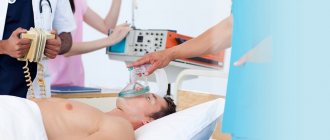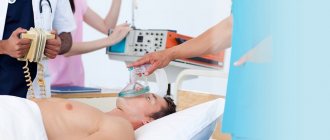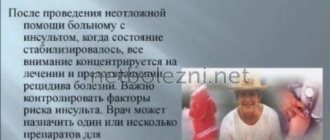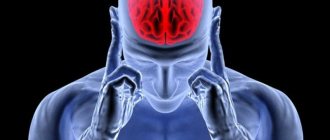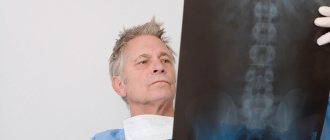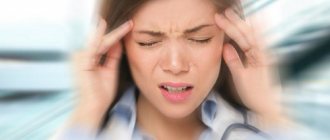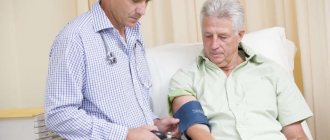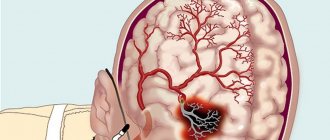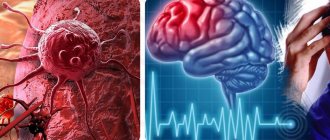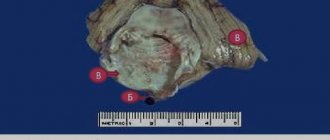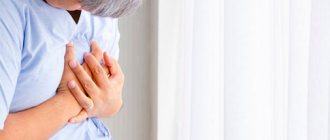Repeated ischemic stroke occupies one of the first places among diseases leading to disability and death. If life expectancy after the first stroke averages eight to nine years, then a second acute cerebrovascular accident can reduce it to two to three years. Therefore, in modern neurology clinics, one of which is the Yusupov Hospital, a large role is given to secondary stroke prevention.
It is proper prevention and treatment that can prevent the recurrence of a vascular accident, because, according to statistics, the probability of a second stroke within a year after the first is about 15%, and after a few years - up to 30-40%.
Who's at risk
After a primary stroke, the body retains mechanisms that provoke the following development of events: intravascular thrombus formation, vascular atherosclerosis. The patient, as a rule, also has a number of concomitant diseases, often in advanced forms: hypertension, diabetes mellitus, arrhythmia, heart failure and others. Preventing recurrent ischemic stroke in such cases is a rather difficult task, but thanks to the efforts of qualified specialists at the Yusupov Hospital, it is feasible.
Repeated ischemic stroke sometimes threatens even patients who are unaware that they have already suffered a vascular accident: patients with short-term disturbances of cardiac or cerebral circulation, the so-called transient ischemic attacks, manifested by the sudden onset of headache, dizziness, numbness of the arm or leg - symptoms which are often ignored, despite the fact that they are the first alarm bells preceding a stroke. The threat of vascular attack increases even more with transient loss of vision, speech, weakness in the upper or lower limb, sudden amnesia and other symptoms.
In this case, the patient should not hesitate; it is recommended to seek medical help as soon as possible at the neurology clinic of the Yusupov Hospital to obtain a doctor’s consultation. You will undergo the necessary examinations: ultrasound examination of large vessels (first of all, it is necessary to examine the carotid arteries), an electrocardiogram, ECHO-CG, detailed blood tests for the lipid profile and the tendency to form blood clots, the level of homocysteine - an amino acid that causes early atherosclerosis and thrombus formation, as well as several times increasing the risk of stroke and heart attack.
A similar examination is also recommended for patients who have suffered a hypertensive crisis, attacks of angina pectoris (pain in the heart area), or arrhythmia. These conditions often precede a stroke and are manifestations of transient ischemic attacks.
Make an appointment
There are two types of stroke:
Ischemic – blood vessels in the neck or brain become blocked. More common, it can be triggered by thrombosis, embolism, or arterial stenosis. More often it occurs at night, while clarity of consciousness is maintained. With a mini-stroke, the blockage of blood flow is temporary, but the condition also requires immediate hospitalization.
Hemorrhagic (intracerebral) - occurs in 10-15% of cases, but 30-60% of them end in death. The blood vessel ruptures completely, allowing blood to flow into the brain. Often a stroke is provoked by an aneurysm, in less than 1% of cases - by an arteriovenous malformation (usually congenital). This type of stroke usually occurs during the day, as a result of excessive physical or emotional stress.
Causes
There are several reasons for the development of a recurrent stroke, including factors beyond a person’s control that provoke the development of a recurrent stroke:
- Patient's age
- Hypertonic disease,
- Alcohol, drug addiction, smoking,
- Poor nutrition
- Failure to follow doctor's recommendations
- Stress,
- Obesity,
- Sedentary lifestyle,
- High cholesterol levels
- Increased irritability
- Diseases of the cardiovascular system,
- Improper work and rest schedule, night shifts, disturbed sleep,
- Diabetes.
The most common type of vascular disorder is ischemic stroke, which accounts for up to 85% of cases. This type of stroke is caused by blockage of blood vessels supplying the brain or their critical narrowing.
The development of ischemic stroke is caused, first of all, by a person’s destructive lifestyle, which means: alcohol abuse, heavy smoking, poor diet, physical inactivity (lack of physical activity). Such habits lead to a deficiency of oxygen in the brain, associated with inadequate heart function, the loss of the vessels’ elasticity and ability to expand, due to which the blood flow increases, which is necessary for the normal functioning of the central nervous system.
Repeated ischemic stroke occurs due to a number of main reasons:
- psychological and emotional stress;
- excessive stress, heavy physical labor (most often, relapses occur during the summer season, if the patient spends a long time in an uncomfortable position, upside down, and also under the scorching sun, as a result of which dehydration occurs, increasing the risk of vascular accident);
- deterioration in quality of life;
- deterioration of the environmental situation;
- indifferent attitude towards one’s own health (neglect of prevention, poor lifestyle).
Types of stroke
Stroke is classified into three types:
1. Hemorrhagic. Its cause is a rupture of a brain vessel, which causes blood to accumulate in the surrounding tissues. Neurons are deformed and their functionality is impaired. Hemorrhagic stroke occurs due to bleeding in the brain into the white matter area. The disease is provoked by sudden surges in pressure that the vascular walls are unable to withstand. The vessels rupture, and hematomas form at the site of the ruptures. The resulting tumor puts pressure on the diseased area of the brain, causing its functioning to be disrupted. 2. Ischemic. It develops due to poor blood supply to tissues, since arterial blood is difficult to reach certain parts of the brain. This is facilitated by thrombosis of the vessel. Blood circulation stops, the diseased area of the brain loses oxygen and nutrients, and cells begin to die. This type of stroke is common in old age. Vessel rupture can also occur due to a detached plaque or after a myocardial infarction. 3. Subarachnoid hemorrhage. Occurs due to a rupture of an aneurysm or injury to a vessel, resulting in an accumulation of blood mass in the brain cavity.
What types of stroke do older people suffer from? In elderly patients, all three types can occur, but they are most susceptible to the ischemic type.
A stroke can be:
1. acute (symptoms appear sharply and increase); 2. subacute (slower development - up to a week with a gradual increase in symptoms); 3. chronic (the disease develops gradually - from a week or longer, it is rare).
Symptoms and consequences
The symptoms of a second stroke are not always the same as those of the first stroke, and they are sometimes quite difficult to determine. Therefore, at the first manifestations of discomfort, it is advisable to turn to professionals - to the neurology center of the Yusupov Hospital, where the patient will quickly undergo a comprehensive examination and be prescribed immediate treatment, thereby minimizing the risk of developing severe complications. Our specialists will organize transportation of the patient to the hospital.
The main symptoms that should cause alarm in a patient who has previously suffered a first stroke:
- the muscles of the face, body or limbs become paralyzed or numb;
- vision deteriorates sharply, vision decreases, blindness occurs;
- speech abilities are impaired;
- consciousness is disturbed: slight drowsiness is felt, fainting occurs, coordination of movements is impaired;
- Nausea and vomiting occur.
The severity of the attack depends on the volume of the affected part of the brain and the location of the affected area. Among the likely consequences of repeated ischemic stroke in the absence of adequate medical care are the following:
- loss of control over the senses;
- loss of ability to think;
- impairment or loss of motor function;
- death (in patients who have suffered a recurrent ischemic stroke, survival is significantly reduced).
Patients suffer a repeated ischemic stroke much more severely than the first, and it is sometimes impossible to predict what consequences it will accompany. In some cases, the nature of the resulting pathologies becomes irreversible. Therefore, the main role belongs primarily to stroke prevention.
First aid
When the first symptoms of a stroke appear:
- Place the patient on the bed.
- Call an ambulance.
- Place the patient on his back or side if vomiting begins or he loses consciousness.
- Unfasten clothes and belt.
- Open the window to allow fresh air into the room.
- Place a cold wet towel or ice in a bag wrapped in cotton cloth on your head.
- Measure the patient’s blood pressure, pulse, and monitor blood pressure and breathing until the doctors arrive.
- If necessary, give medications that were previously prescribed by the attending physician.
- Constantly talk to the patient, try to get answers to questions from him, and do not lose contact.
Forecast
As is already known, the five-year survival prognosis is disappointing. Loss of intellectual and motor abilities after a second stroke can be lifelong. Most patients after a relapse suffer from irreversible changes and pathologies in the cerebral cortex.
After lesions, patients usually experience disability. In more than half of patients, after suffering a recurrent stroke, a coma occurs, which does not allow the doctor to give a positive prognosis about recovery from it.
Rehabilitation of patients after repeated ischemic stroke in the neurology clinic of the Yusupov Hospital is based on traditional, latest and original methods for the recovery of patients who have suffered a stroke.
Thanks to the extensive practice and rich knowledge of the clinic’s specialists in the field of rehabilitation medicine, comprehensive rehabilitation of patients is carried out at the highest level, meeting international standards.
For optimal rehabilitation, patients are provided with comfortable conditions of stay: cozy rooms, good nutrition and attentive attitude of the staff.
Call by phone and the coordinating doctor will answer all your questions.
Make an appointment
Periods of rehabilitation after a stroke
Modern medicine recommends starting rehabilitation of a patient who has suffered a stroke in the first hours after the attack, as soon as hemodynamic parameters (heart rate, blood pressure) return to normal. This allows not only to restore lost functions as much as possible, but also to avoid various complications that can aggravate the patient’s condition.
The recovery period can be divided into several main stages:
- acute (first 3-4 weeks after the attack);
- early recovery (first 6 months after an attack);
- late recovery (from 6 months to a year);
- remote (more than a year).
Life after ischemic stroke
If the patient experiences an acute period of stroke, then residual disorders are possible in the form of:
- complete immobilization;
- paralysis on one side of the body;
- partial paralysis of a limb;
- paresthesia (numbness with loss of skin sensitivity);
- speech and swallowing disorders;
- vestibular disorders;
- hearing loss;
- pelvic paralysis with inability to control bowel and bladder movements;
- decreased intelligence;
- changes in psyche and character;
- impossibility of self-service.
Recovery of various impaired functions in patients with ischemic stroke occurs at different rates. Thanks to the use of innovative techniques in the rehabilitation clinic of the Yusupov Hospital, movement disorders go away faster, and it may take longer to restore speech. After discharge from the hospital, patients need support from loved ones and continued rehabilitation under the supervision of specialists from the Yusupov Hospital.
Life is under attack
L.A. Kalashnikova Doctor of Medical Sciences, State Research Institute of Neurology, Russian Academy of Medical Sciences
Who would argue that a stroke is very serious? Not so long ago, this diagnosis was strongly associated with old age. Today, this disease leads the sad list of “rejuvenated” diseases. The blow is increasingly hitting young and full of energy people. Moreover, he treats them with his characteristic cruelty and deceit. What are the causes of early stroke, is it possible to predict its occurrence and how to protect against it? These questions are answered by a neuropathologist at the Institute of Neurology of the Russian Academy of Medical Sciences, Doctor of Medical Sciences Lyudmila Andreevna Kalashnikova .
— Lyudmila Andreevna, how does a stroke at a young age differ from a stroke in older people? — There are two types of strokes. The first of them is hemorrhagic, or hemorrhage; as a rule, it develops against the background of high blood pressure due to a rupture of a vessel wall that has lost its elasticity or a congenital anomaly (aneurysm). In this case, the wall of the vessel ruptures and blood flows from its lumen into the brain tissue, which leads to its serious damage. This type of stroke most often develops in middle-aged and elderly people suffering from arterial hypertension. The second type of stroke - ischemic - is associated with deterioration of blood supply to the brain. Its cause may be a blockage of a brain vessel or a narrowing of its lumen, which leads to necrosis (cell death) of a certain area of the brain. Previously, it was believed that ischemic stroke occurs, as a rule, only in older people. Doctors believed that its main cause was atherosclerosis, in which cholesterol plaques developing in the wall of the vessel narrow its lumen and interfere with blood circulation. But in recent years, especially after the introduction of computed tomography and magnetic resonance imaging of the brain, it has become obvious that ischemic strokes very often occur in fairly young people. According to the World Health Organization criteria, these are people under 45 years of age. Moreover, the causes of ischemic stroke are completely different.
- And what is this difference? — If in older people, as I already said, the cause of ischemic stroke is atherosclerosis, as well as hypertension, then in young people only 10-20% of all cases are associated with this disease. A stroke in young people causes a violation of the coagulation properties of the blood, increasing its “thickness” and clotting. In this case, blockage of the vessel occurs not due to cholesterol plaques, but due to thrombosis. When small-caliber arteries are affected, this leads to relatively mild strokes, but sometimes to widespread, repeated ones. When large arteries, such as the middle cerebral artery and the internal carotid artery in the neck, become blocked, the consequences can be very serious. The whole world is actively studying coagulation disorders and their treatment today. Moreover, in a number of situations our research is in no way inferior to Western research.
- And what are our discoveries? — As with any other disease, in order to successfully treat the disease it is necessary to understand its causes. Today it has already been proven that one of the most common causes of “thickening” of the blood is problems in the human immune system associated with the production of special antibodies (they are called antibodies to phospholipids) that interfere with the blood coagulation system. Brain thrombosis can develop in a variety of veins and arteries, including brain vessels - it is not known in which place the blood clot will “shoot”. In this case, correct diagnosis is very important. Even before special immunological studies are carried out, it can sometimes be suspected that this is the reason that led to an ischemic stroke. And here it is important to remember that often such strokes are combined with other serious systemic manifestations.
- For example? “For example, today it is known that women are more susceptible to ischemic stroke. In general, they have immune disorders more often. The first manifestation of a hypercoagulable state in women caused by antibodies to phospholipids is usually not thrombosis of the brain, but thrombosis of completely different areas. This may be thrombosis of the placental artery, then the disease begins with miscarriage, spontaneous abortion or intrauterine fetal death. Sometimes, also often during pregnancy, thrombosis of the leg veins can develop. And some time after childbirth, and sometimes right during pregnancy, a stroke occurs.
Since we are talking about women, I would like to say one more very important thing. Sometimes an increase in blood clotting can be caused by taking contraceptives. Moreover, nowadays patients take them not only to prevent pregnancy, but also to treat various hormonal disorders. The hormone estrogen contained in these drugs increases blood clotting, which can provoke thrombosis and cause a stroke.
— Is an immunological problem the only cause of stroke? - Unfortunately no. Very close to this pathology is the so-called Sneddon syndrome - a disease named after the English dermatologist Sneddon, who first described it. It is characterized by the appearance of branched bluish vascular spots (livedo) on the skin, giving it a “marbled” appearance. We believe that its causes are also related to blood clotting disorders, which are a consequence of the production of antibodies to phospholipids. True, not all such patients have these antibodies. Apparently, more subtle research is needed.
To date, our Institute has examined more than a hundred patients with this disease, and we have extensive experience in its treatment. In other countries it is much less. After our foreign publications, the work of Russian scientists became known throughout the world. In addition, there are other bleeding disorders that we are actively studying together with hematologists.
— Diagnosis is diagnostic, but what about treatment? — Treatment is aimed at reducing blood clotting using special medications. If this is not done, these people often develop repeated disorders - which can result in very severe widespread brain damage, which can lead to memory loss, impaired movement, coordination, or repeated strokes, which can be fatal. Today we have patients who have been receiving this treatment for 15-16 years and are in a relatively stable condition. Previously, when we did not know the causes of this disease, most often the ending was death. Therefore, when a young person has a stroke, a detailed examination is necessary. The success of treatment is largely related to the ability to study the properties of blood clotting. Large institutions have them today.
— Are the causes of these immune disorders congenital or acquired? - Acquired. We have long noticed, and many scientific works have been devoted to this, that infection plays a big role in their appearance. As a rule, these are repeated sore throats, pneumonia or frequent bronchitis. But they are only a kind of trigger mechanism when there is an innate predisposition to the development of disorders, a genetic defect of the immune system.
— Could a stroke be associated with trauma? - This also happens. Severe trauma, and in some cases general concussion received from a car accident, fall, etc., can lead to the development of a hematoma in the wall of the vessel. Because of this, the lumen of the vessel supplying the brain narrows, and, as a result, a stroke occurs. The time and rate of stroke development depends on how quickly the hematoma grows. In some cases, its symptoms appear quite quickly, within a few hours after the injury, and in others - after a few days. Over time, a hematoma, like an ordinary bruise, can resolve, and the lumen of the vessel is restored. Then repeated examination of the vessels no longer reveals it. In this case, its timely implementation is very important - in the acute period. Moreover, if earlier it was invasive angiography (with the introduction of a contrast agent into the vessels), now there is magnetic resonance angiography, which is painless and safe for the patient. In addition, there are other lesions of the vascular wall. But these are very rare cases that are of interest mainly to scientists.
— Is there a connection between stroke and heart disease? - Yes. This type of stroke is called cardioembolic. It accounts for about a third of all cases. It can occur with damage to the endocardium, heart valves, or disturbances in its rhythms. As a result, small blood clots form, which travel through the bloodstream to the brain and lead to ischemic stroke. But this all happens again with increased blood clotting.
— Does a stroke often lead to disability? — The causes of ischemic stroke at a young age are very different, and the further condition depends on how large the lesion has formed in the brain. If the stroke is extensive and has led to serious motor and speech disorders, such a person cannot work. If an ischemic stroke is associated with damage to the arteries, then its symptoms come and go. The person restores all his functions and outwardly appears completely healthy, he does not have any visible defect. Here it is very important to identify the existing pathology that led to the stroke and prevent it from developing again. When it comes to changes in blood composition, a person must constantly take anticoagulants and small doses of aspirin (a medicine that reduces blood clotting) - be treated constantly, as for diabetes or hypertension.
— Although a stroke strikes us, as a rule, unexpectedly and not by chance, it is called a stroke, what can be done to prevent it or mitigate the consequences? — Since the overwhelming majority of strokes at a young age are associated with increased blood clotting, factors that aggravate it should be avoided: taking medications containing estrogen (including contraceptives), smoking, large doses of alcohol and fatty foods. Women should also be wary of a disease such as migraine. We have noticed that when they suffer from migraines, they often have a tendency to “thicken” their blood, and taking contraceptives can aggravate this condition. This is most often observed in a special form of migraine, which was previously called associated, and now called migraine with aura. The onset of a headache attack in this case is preceded by a number of neurological symptoms. These are, as a rule, visual disturbances in the form of flickering, luminous stripes. Such a prolonged migraine attack can sometimes be complicated by a so-called migraine infarction.
If there are signs of atherosclerosis at an early age, it is mainly associated with a hereditary predisposition to lipid metabolism disorders, it is also necessary to conduct a timely examination. Diagnosis of atherosclerosis is quite simple - we scan the arteries of the head and identify sclerotic plaques. The diet is selected accordingly. And if necessary, cholesterol-lowering medications are prescribed.
For any neurological disorders, do not hesitate to visit a doctor. You should always pay attention to any weakness in an arm or leg, numbness, or unexpected double vision that is not directly related to injury or visual impairment. You should be alert to unexpected speech disorders when a person cannot formulate a thought, finds it difficult to say something, or begins to poorly understand what is being said. All these symptoms indicate that a certain brain structure is suffering. Even if these symptoms come and go, they must be taken very, very seriously.
If you have experienced a stroke with a good recovery, and you do not have atherosclerosis or hypertension, you should definitely conduct more in-depth research and try to find out its causes. Unfortunately, in city hospitals today there are no such opportunities, since the problem requires good technical equipment, but they are available in specialized institutes.
And finally, no matter how trite it sounds, it is necessary to lead a healthy lifestyle. After all, the risk factors here are exactly the same as for other vascular diseases: unfavorable heredity, a tendency to increase blood pressure, abnormal lipid metabolism - aggravated by frequent stress, poor diet, alcohol abuse and smoking.
The conversation was conducted by Svetlana Troitskaya
© Magazine “Egoist”, 2003, No. 6
Prognosis in older people
In patients with ischemic stroke, age is one of the most important factors that influence the prognosis and quality of life after the acute period of the disease. In older people, ischemic stroke is much more severe than in younger patients. Doctors at the Yusupov Hospital take an individual approach to the treatment of elderly patients; when prescribing medications, they use doses recommended for a certain age. When using innovative methods of kinesitherapy, the age characteristics of the body are taken into account.
The prognosis after an ischemic stroke suffered by an elderly person is influenced by the following factors:
- localization of the ischemic focus;
- prevalence of cerebral infarction zone;
- a disease that caused a stroke;
- severity of neurological symptoms.
Coma caused by cerebral edema is the most severe neurological manifestation of a stroke, sharply worsening the prognosis.
Factors that positively influence the results of rehabilitation of elderly patients and improve the prognosis are:
- a small lesion confirmed by computed tomography;
- maintaining the patient's full consciousness;
- minimal number of neurological damages;
- absence of pronounced atherosclerotic changes in blood vessels according to the results of Dopplerography of the arteries of the head and neck;
- the patient's profession requiring constant mental stress;
- normal blood pressure;
- absence of arrhythmias and other heart diseases.
Stroke in older women and men: differences
Men suffer less from the consequences of a stroke, and they also have fewer deaths. In women of the same age, these rates are higher.
In women, the following factors increase the risk of suffering from a stroke:
• Vascular problems and heredity; • Difficult pregnancy in the past; • Long-term use of hormonal drugs; • Abundance of stressful situations in life; • Passion for alcohol and smoking.
How do stroke symptoms differ in older women from men? Men are characterized by a “classic” set of symptoms; in women, symptoms resemble migraines:
• Headache in one area of the head, for example, in the temple; • Deterioration of lateral vision, blurriness of small details, points in front of the eye on the affected side; • On the affected side of the body, the limbs tingle and go numb; • The woman speaks unclearly; • There are problems with memory, disorientation in space and time; • Prolonged hiccups occur; • Outbursts of aggression occur.
Treatment
A patient with a recurrent stroke most often ends up in the intensive care unit. At the Yusupov Hospital, doctors begin treatment and early rehabilitation immediately after diagnosis. The prognosis is most favorable when patients are admitted to the neurology clinic within the first 4 hours from the appearance of the first signs of acute cerebral circulation. Doctors at the neurology clinic prescribe adequate treatment, thanks to which the nerve cells around the ischemic site completely restore functional activity.
The use of thrombolysis therapy by neurologists at the Yusupov Hospital for elderly patients significantly improves the prognosis. As a thromolytic agent, doctors at the neurology clinic use the most effective drug - tissue plasminogen activator. After the clot dissolves, blood flow through the affected vessels is restored, the supply of oxygen and nutrients to the ischemic area and the area around the cerebral infarction improves. The outcome of ischemic stroke is improved by the use of ancrod (an enzyme from snake venom) in the first 3 hours after the development of acute cerebrovascular accident and for five subsequent days.
To prevent further formation of blood clots and re-embolism, elderly people are given:
- direct anticoagulants (sodium heparin or low molecular weight heparin);
- antiplatelet agents;
- drug from the thienopyridine group Ticlopidine.
If there are contraindications or a high risk of complications from taking these drugs, doctors at the Yusupov Hospital prescribe Clopidogrel to patients. Drugs with neuroprotective and neurometabolic effects improve the plasticity of nerve cells. The tone of cerebral arteries in elderly people increases under the influence of vasoactive drugs.
In elderly people, ischemic stroke often occurs against the background of severe arterial hypertension. During the 7-10 days of the acute period of stroke, cardiologists at the Yusupov Hospital when the patient’s systolic blood pressure is less than 200 mm. rt. Art. do not carry out antihypertensive therapy, since hypotension worsens the oxygen saturation of brain areas susceptible to ischemia. In patients with systolic blood pressure above 200 mm. rt. Art. it is reduced very slowly to numbers of 10 mm. rt. Art. exceeding the pressure to which the patient is adapted. After the acute period, cardiologists select individual antihypertensive therapy.
Prevention
Preventive measures should be regularly observed by all elderly people over 60 years of age.
1. Regularly undergo a comprehensive examination of the body. In old age, regular examinations are especially important if a person has frequent headaches, dizziness, fainting, hypertension and arrhythmia, elevated cholesterol levels, a traumatic brain injury, or problems with vision, hearing, sleep, attention and memory. 2. Adhere to healthy lifestyle standards. It is especially important to eat right and give up bad habits. 3. Monitor blood pressure and glucose levels and maintain these indicators within normal limits. 4. Do physical therapy. A specialist will help you choose the appropriate exercises individually for the person. 5. Avoid excessive stress, maintain a calm emotional background. 6. Treat chronic diseases.
Remember the main signs of a stroke and how to check for it. Be attentive to the health of a loved one and immediately call an ambulance if you suspect a stroke - time is very important. Provide first aid and then assist the victim in recovery. If your loved one is healthy, teach them about stroke prevention. Correct actions will help protect yourself from a dangerous disease.
Rehabilitation
Early rehabilitation significantly improves the prognosis after a stroke. Doctors at the Yusupov Hospital begin to carry out rehabilitation measures from the first day the patient is admitted to the neurology clinic. The intensity of the rehabilitation program depends on the patient’s condition and the degree of his disability. At the Yusupov Hospital, the department for seriously ill patients is equipped with special multifunctional beds. Using the devices of a multifunctional bed, medical personnel can periodically change the patient’s position, carry out hygiene procedures, and care for the patient. Changing your posture helps avoid the formation of bedsores and congestion. To reduce the risk of developing contractures, joint pain, pneumonia, and deep vein thrombosis at the Yusupov Hospital, specialists carry out passive rehabilitation from the first days of treatment.
To improve the prognosis of older people, rehabilitation specialists at the Yusupov Hospital after a stroke use the following innovative methods for restoring impaired functions:
- PNF;
- Voita therapy;
- minor manual therapy;
- Castillo-Morales method;
- kinesio taping;
- Mulligan concept;
- Bobath therapy.
Treatment and rehabilitation
First aid
If you detect the first signs of a stroke, you should immediately call an ambulance (112 - from a mobile phone, 03 - from a landline).
Next, do the following:
1. The patient's head should be elevated. Lay him on the bed and place pillows under his head, shoulders, and upper back; 2. Open the window to allow fresh air; 3. Unbutton all tight clothing: shirt, belt, tie; 4. Measure your blood pressure; 5. If the patient is vomiting, turn your head to the side - the vomit should not enter the respiratory tract.
No medications should be given until doctors arrive. If the patient has lost consciousness and fallen into a coma, artificial respiration and chest compressions must be performed. In a difficult situation, continue to fight for the life of the victim until the end - there is a chance of salvation. People who suffered severe attacks were saved even in the most difficult cases. Remember that only medical professionals can confirm death. Help the patient and wait for the ambulance.
Treatment in hospital
After arriving at the hospital, the patient is sent to the neurovascular department of the hospital, where he undergoes therapy. The patient must normalize blood pressure, prevent swelling and hypoxia of the brain, restore healthy brain function, normalize blood counts and prevent disability.
An elderly person who has survived a stroke needs constant medical care and care from loved ones. Measures are taken depending on the type of stroke:
• Ischemic: reperfusion treatment. Medications are used along with mechanical treatments to restore healthy blood flow in the blocked vessel. • Hemorrhagic: treated with hemostatic agents that lower blood pressure. In case of major hemorrhage, surgery is performed. Surgery can remove blood clots and reduce hematoma.
In the treatment of stroke in the elderly, drugs are used to lower blood pressure, normalize cholesterol, fight blood clots, improve heart function and circulation, antidepressants and sedatives. Medicines are prescribed depending on the individual situation of the patient.
An elderly patient may be prescribed intra-arterial thrombolysis, and endovascular treatment methods are also used. At the beginning of therapy, antiplatelet agents are used. In the first hours after the onset of a stroke, the patient is given aspirin.
After the first treatment, the patient expects long-term rehabilitation and care. Care for the patient depends on his condition. Bed rest and regular skin hygiene by wiping are recommended to everyone. The bed in the head area should be higher, and you should also change your body position regularly (every 2-3 hours) - this is the prevention of bedsores.
A neurologist treats strokes. It helps restore lost physical and mental functions, and also prevents recurrent attacks.
During rehabilitation, various exercises and techniques are used to restore a person’s speech and motor activity. Teachers and psychologists work with the patient to help him return to the social environment. The person is prescribed medication, nutritional therapy, and physical procedures. It is important to follow a healthy diet: eat boiled or steamed food, limit yourself to sweets, salty, fatty foods. You need to give up alcohol and tobacco.
The effectiveness of restoring lost functions will depend on the size and location of the affected area, the general health of the patient, the participation and assistance of loved ones, and the quality of rehabilitation. It is better to begin recovery a week after the stroke, when the patient’s condition becomes stable.
Rehabilitation lasts from several months to several years. Much depends on the patient’s condition and the quality of rehabilitation. Motor activity may return within six months, speech within 2-3 years. With a high-quality integrated approach, the patient will recover faster.
Rehabilitation: highlights
Rehabilitation after a stroke can be divided into several areas of recovery: speech, motor functions, swallowing and bowel function, memory, vision and facial symmetry.
Speech restoration occurs with the help of special exercises that must be performed regularly. A speech therapist works with the patient. A person is taught to pronounce simple words and phrases, communicate with him by asking easy questions, and learn to understand speech. It is also important to train the muscles of the face and tongue, and develop facial expressions. Next, a person is taught reading and writing. If speech cannot be restored, a person learns to communicate using facial expressions and gestures.
To restore memory, they use short texts to memorize, recall incidents from life, communicate on light topics, use finger games and mental games (for associations, invention, logical connections).
Physical therapy is used to restore movement. Use exercises to flex, rotate and move the limbs. They should be done slowly, gradually increasing the load. There should be no pain or discomfort. They also do exercises for the eyes.
In order for the face to become symmetrical again, it is necessary to restore healthy muscle tone and normal shape. To do this, use special exercises for the facial muscles: smiling, winking, jaw movements.
To restore swallowing, the patient is fed light and tasty foods that are easy to chew and swallow. He also does gymnastics for the tongue and lips.
After a stroke, a person spends a long time in a lying position, and this negatively affects the condition of his intestines. To maintain or restore healthy bowel function, he is prescribed laxatives and enemas, as well as a diet rich in fiber.
After an attack, a person may partially or completely lose vision. To prevent blindness, they do special eye exercises, use medications, or perform surgery.
For recovery, a therapeutic massage may be prescribed: it will help to quickly establish healthy physical activity.
Additional Treatments
In addition to the main methods of treatment and rehabilitation, additional methods are used. Let's take a closer look at them.
• Botox therapy. The muscles of people who have suffered a stroke are in tense tone. To relax them, various techniques are used, including Botox therapy. Botox injections help relieve muscle tension. • Exercise therapy – helps restore limb mobility. • Therapeutic massage will improve blood circulation, help cope with spasms, and improve the functioning of the nervous system. • Physiotherapeutic methods relieve pain, restore healthy blood flow, and improve organ function. They use different techniques – both individually and in combination. Vibromassage, electrical stimulation of muscles, electrophoresis, and laser therapy are popular. • Kinesthetics. The patient gradually learns to make movements that do not cause pain. This allows him to move without an assistant - for example, to turn independently in bed. • Reflexotherapy – impact on biologically active points using needles. Acupuncture helps relieve muscle tension, improve the condition of the musculoskeletal system, and establish healthy functioning of the nervous system. • Bobath therapy – teaches healthy areas of the brain to perform duties instead of damaged ones. The entire therapeutic process is under the supervision of a doctor. • Psychotherapy. A person who has experienced a stroke needs psychotherapeutic help and support. It will help cope with depression and psychological problems. This will support the patient's mental health and brain health, which is very important for successful recovery. • Occupational therapy – helps a person return to normal life and restore ability to work.
Folk remedies for recovery
Folk remedies are good helpers during the rehabilitation period. They cannot replace traditional medications, nor can they be self-prescribed. A suitable folk recipe, agreed upon with the attending physician and used as an addition to the main methods of treatment, will help the elderly patient in recovery.
For people who have suffered a stroke, recipes based on black radish, aloe juice, bay leaf, horse chestnut, hawthorn, rose hips and other herbs are suitable. Herbal infusions are popular.
Recommendations after a recurrent stroke
All patients who have suffered a stroke are at risk of relapse of the disease. Doctors at the Yusupov Hospital give recommendations to patients on nutrition and prevention of recurrent stroke:
- Dieting. Refusal of spicy, smoked, fatty and sweet foods, alcohol, caviar, eggs, liver. The menu includes more vegetables, fruits, and grains.
- Rejection of bad habits.
- Refusal of heavy physical labor, night shifts, and work with high psycho-emotional stress.
- Sleep at least 8 hours a day.
- Avoid stressful situations.
- During the rehabilitation period, measure blood pressure every day, after completion of rehabilitation at least 3 times a week.
- Take medications prescribed by your doctor in a timely manner and strictly on time.
- Regularly undergo preventive examinations.
- Do the recommended therapeutic exercises daily.
Rehabilitation after stroke in the early recovery period
The early recovery stage is crucial for the patient and should ideally take place in a sanatorium or rehabilitation center. When deciding to leave the victim at home, you should remember that successful recovery after a stroke is impossible without the active participation of specialized specialists who will have to be invited to the home.
The first three months after the onset of the disease are especially productive and favorable for rehabilitation. At this stage, they move from the simplest exercises to more complex ones - they teach a person to roll over, rise, sit down, and stand up independently. Next, elements of active physical therapy are gradually introduced, physiotherapy, massage, speech work are continued, and complexes are performed to restore vision and eye movements, cognitive functions (memory, thinking, attention).
A common consequence of a stroke is complete or partial loss of vision, dysfunction of the eyelid, presbyopia, when a person cannot distinguish small print or small objects at close range. All these disorders require qualified assistance from an ophthalmologist, who will prescribe either medication or surgical treatment. In mild cases, they can do with therapeutic exercises for the eyes.
To restore attention, memory, and intellectual abilities, there are many exercises: memorization tasks, memorizing poetry, solving riddles, rebuses, putting together puzzles, chess, checkers. However, for complete rehabilitation of cognitive functions, psychological and correctional classes are necessary individually or in groups. Additional stimulation is provided by medications that should be prescribed by a doctor.
